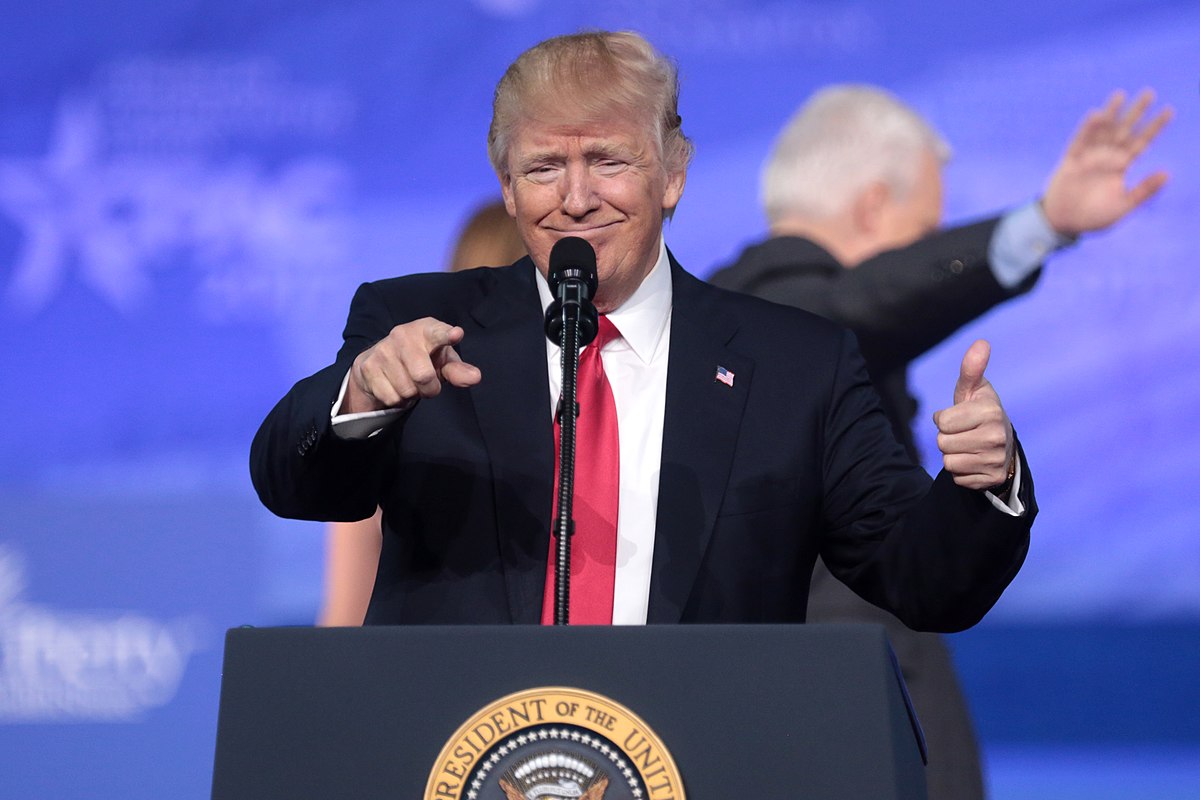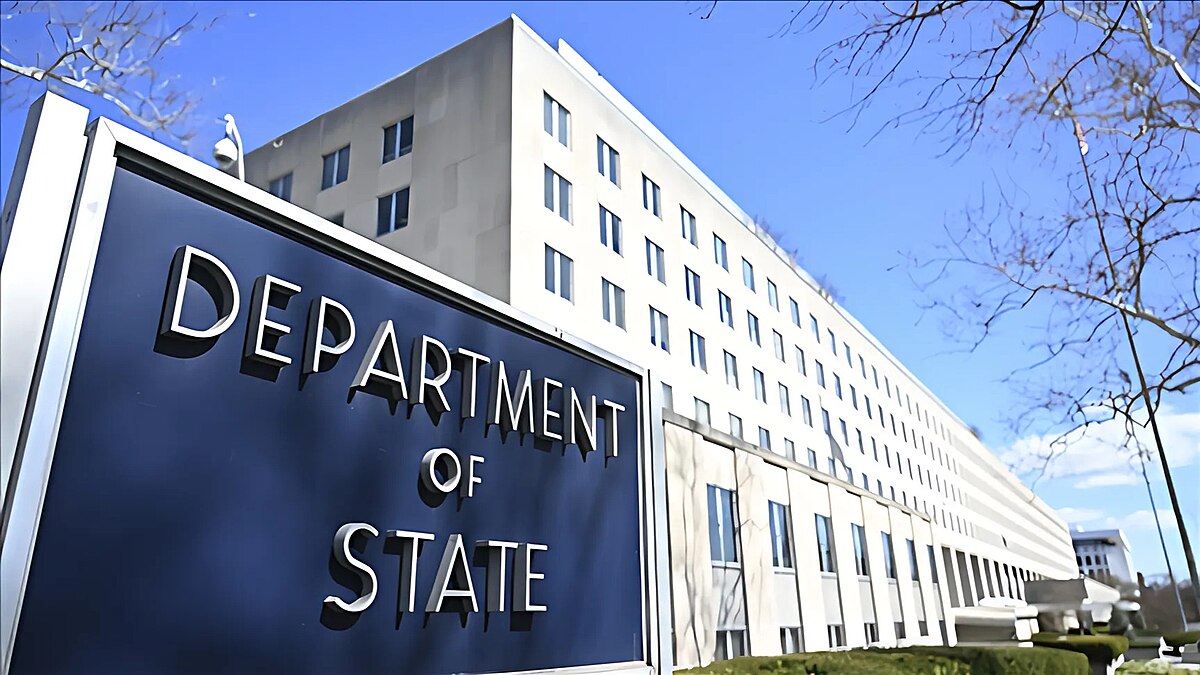- 14 3402-5578
- Rua Hygino Muzy Filho, 737, MARÍLIA - SP
- contato@latinoobservatory.org
 Gage Skidmore from Peoria, AZ, United States of America
Gage Skidmore from Peoria, AZ, United States of America
It is widely known that, historically, Donald Trump — elected president of the United States for the second time — has presented extremist attitudes and speeches regarding foreigners who have migrated to the country. The last election was no different and, in 2025, Trump will take over the White House with a position that reinforces the promise of mass deportation of undocumented immigrants – who contribute, according to estimates, 11 million people to the US population.
Taking such an action may seem bold, but the newly elected president does not seem to see any impediment, having already indicated his intention to make the border “strong and powerful” using the army and the declaration of a national emergency. Trump also appears to be sparing no expense when it comes to economic and logistical investments in his plan to carry out “the largest deportation effort in the history of the country,” as he told NBC News in November of last year: “It’s not a question of price. It’s not — we really have no choice.”. In order to measure – in financial terms – the magnitude and complexity of Trump's plan, the immigrant advocacy group, the American Immigration Council, estimated at US$968 billion the cost of deporting 13 million immigrants in the United States over the course of just over a decade.
There is still much uncertainty about the effective implementation of the measures expected on such an unprecedented scale, which raises the question, before moving on to the analysis of the actors possibly affected, what Americans themselves think. Popular support for Trump's campaign promises was already significant since the beginning of the election period, but the current scenario does not seem to be any different: a survey conducted among American citizens by YouGov at the end of last November indicates that the absolute majority – specifically 57% – of those interviewed support the new administration's mass deportation plan, while 43% disagree. Among Republicans, the validation is even greater, with 85 out of 100 approving – according to data from Ipsos and Scripps News – and, although discontent with illegal immigration is nothing new among Republican Party supporters, it is noted that the current support of its voters for measures to combat it is the highest in just under three decades:
However, this animating force is not static and popular opinion may change as policies are observed in practice. Still based on the research carried out by Ipsos, highlighting the conditions imposed and possibilities potentially faced during the implementation of mass deportations, the spectrum of opinion becomes tenuous and the support of Americans decreases considerably, as illustrated.
Behind the
mass deportation plan
A fierce and divisive proposition coming from a ruthless personality like Donald Trump is not unforeseeable, especially when one knows his conservative and reactionary rhetoric, so much so that the decision to implement mass deportation reflects a combination of strategies and ideological commitments that make up his political identity, as is the case with his critical views on immigrants in the United States. Since 2016, in his campaign promises, the president intended to take strict measures against undocumented immigrants – which he did, for example, through the construction (interrupted by the subsequent government) of the emblematic US-Mexico border wall. Even in his first term, Trump implemented controversial practices, such as family separations and deportation operations; in 2024, his objective is to intensify these measures with less flexibility.
Donald Trump’s focus on immigration and strict
enforcement of laws against undocumented immigrants attracts voters concerned
about border security and the economic and social impacts of illegal
immigration. In addition, to energize his base of supporters and reach voters
who lean toward conservatism, the newly elected president uses rhetoric such as
national security and “America First.” As for national security, Trump
constantly associates illegal immigration with public safety issues—such as
gangs, crime, violence, and drug trafficking—with the justification that
softening immigration policies makes the country vulnerable to external
threats. These “threats” would comprise a spectrum that ranges from literal
terrorism to the supposed calamity behind an immigrant’s employment
relationship – an argument that helps justify the defense of the slogan
“America First”, which defends the idea that the insertion of immigrants into
the country’s labor market would generate the occupation of jobs originally
“intended” for native Americans, promoting competition and a drop in wages.
Narratives like these are what allow the Republican Party to be strengthened
and the population to consent to measures that are often extreme.
Mass
deportation policies and their general consequences
A new deportation plan has been structured for Donald Trump’s new term (in relation to his previous term), which aims to send more than one million illegal immigrants back to their countries of origin each year – with a special focus on Latin American populations, who account for the majority of undocumented immigrants. The number of deportees is almost four times higher compared to his first term.
In 2017, when he was first elected, Trump developed anti-immigration policies and expelled thousands of people who were illegally staying, with one of his most notable measures being the attempt to end the DACA (Deferred Action for Childhood Arrivals) program, which was intended to protect "dreamers" (i.e. immigrants who arrived in the US as children). This time, to continue his previous measures, the Republican figure has planned to implement even more restrictive policies to control the flow of immigration, in addition to expanding the priorities for deportation since the first day of his administration. In this sense, the resumption of the construction of walls — legal and physical — around the border with Mexico has also become a focus of discussion. Furthermore, the president stated that he will use the National Guard and other military forces to carry out the expulsion, in addition to intending to increase the resources of Immigration and Customs Enforcement (ICE) in order to achieve his goal of carrying out mass deportation more quickly. Even though his inauguration is scheduled for January 20, 2025, the newly elected president has already taken strategic steps to carry out his new term; Thomas Homan, for example, was appointed as “border czar” and will be in charge of the operation, having already worked in the area during his first term in the State of Texas. In addition, for the government’s upcoming deportation plan, Texas congressman Dan Crenshaw stated that criminal immigrants will be a priority in the implementation of the new policies.
Regarding the occurrence of mass deportation, there are a series of consequences – both for immigrants and for the State – that can be analyzed: firstly, as expected, the next four years, although still uncertain, predict a decline in the quality of life of immigrants on North American soil, if the president's plans are carried out. Among them are around 200 thousand Brazilians, whose names make up the already structured priority list for deportation.
In addition to fostering a hostile scenario in which immigrants are forced to return to their countries of origin and are forced to give up everything they have built up until then, deportation policies end up directly affecting many families, especially Latino families, which are mixed (i.e., composed of individuals with different immigration and birth statuses). In a case such as family separation due to inflexible deportation measures, for example, communities will be broken up and, specifically, children who are natural citizens of the United States will be separated from their parents or guardians with immigration status, causing a loss of stability, including family, emotional and psychological stability.
On the other hand, when considering the logistics behind Trump's plan, it is understood that the expansion of deportations could overwhelm the immigration court system (which naturally has limitations). Another obstacle arises when the issue of civil and organizational support for government actions comes into play, since many NGOs and human rights activists will fight against the mass deportation policy. Furthermore, in order to achieve the expected result, it would be necessary to invest a large amount of resources, which could amount to tens of billions of dollars, including processes, transportation and temporary shelter. The media coverage would also create impasses based on reports of expulsion and family separation, directly affecting relations between nations by generating tensions on the international stage.
Therefore, new statements from the president and his supporters are expected in the coming month. Jason Leverant, president of a large American recruitment company, stated: “We are playing the long game now, the pain will be felt and we will see shortages, slowdowns and delays on all fronts”.
That said, it is understood that the mass
deportation proposals of the new Donald Trump administration represent a
divisive milestone in US immigration policy, with significant implications for
individuals, communities and the state itself. Although the plan is based on
campaign promises justified by arguments about national security and economic
protectionism, its implementation is controversial due to ethical, logistical
and humanitarian issues. Furthermore, the potential impact on family
communities and the country’s economy suggests challenges that go beyond
political discourse, requiring a broader reflection on its repercussions. At
the same time, considerations of American society will have great weight in the
viability and acceptance of these policies, and although support among
Republican voters is considerable, divisions in public opinion and opposition
from activists may shape the debate and diminish the intensity of extremist
measures throughout the term. Thus, the unfolding of these actions will not
only test the limits of Trump’s second administration, but also reaffirm the
struggle between contrasting ideologies on immigration and national identity in
the United States, especially when addressing Latino people.











